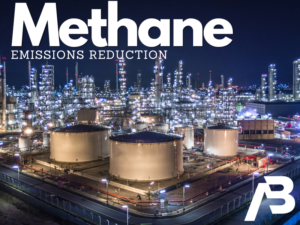Canada’s oil and gas industry has long been a subject of global fascination. From its vast reserves to the controversial environmental impact, this sector has found itself amid countless debates and discussions. Today, we embark on a creative and human-like exploration of this perplexing industry, delving into its historical roots, present challenges, and future prospects.
The Historical Roots
The story of Canada’s oil and gas industry begins in the mid-19th century when the first commercial oil well was drilled in Ontario. However, it wasn’t until the discovery of Leduc No. 1 in Alberta in 1947 that the true potential of the industry was realized. This pivotal moment marked the birth of Alberta’s famous oil sands, boasting one of the largest oil reserves worldwide.
Throughout the decades, Canada’s oil and gas industry became synonymous with economic prosperity. It played a crucial role in fueling the nation’s growth and development, attracting both domestic and international investments. The industry became a symbol of Canada’s resource wealth and positioned the country as a major player in the global energy arena.
Present Challenges
Despite its historical success, the oil and gas industry in Canada faced numerous challenges that have raised eyebrows around the globe. One of the most significant concerns pertains to the environmental impact associated with extracting fossil fuels. Critics argue that the industry’s carbon-intensive practices contribute to climate change and harm ecosystems. These concerns have triggered heated debates within Canada and have put pressure on the industry to adopt more sustainable practices.
Moreover, the industry has experienced several setbacks in recent years. The global decline in oil prices in 2014 hit Canada’s oil sands hard, leading to job losses and reduced investments. Additionally, projects such as the Trans Mountain Pipeline expansion face opposition from environmental groups and Indigenous communities, further polarizing public opinion.
Bright Spots on the Horizon
Amidst the challenges, Canada’s oil and gas industry also holds promising opportunities. Advancements in technology have allowed for more efficient and eco-friendly extraction techniques, mitigating some of the environmental concerns. Additionally, the industry has diversified its operations by exploring renewable energy sources and investing in clean technology research. This shift not only demonstrates a commitment towards sustainability but also ensures the sector’s longevity in an evolving energy landscape.
Furthermore, Canada’s vast reserves of oil and gas continue to be coveted by global markets. As countries seek to secure energy sources, particularly in the wake of geopolitical tensions, Canada stands poised to meet the demand. With ongoing strategic partnerships and trade agreements, the industry has the potential to rebound and regain its footing in the global market.
Conclusion
Canada’s oil and gas industry is undoubtedly a perplexing entity. From its historical significance to the challenges it faces today, the industry captivates attention worldwide. As we move forward, finding a balance between economic growth and environmental sustainability will be a herculean task. However, with innovation and collaboration, Canada’s oil and gas industry can navigate these tumultuous waters and emerge stronger, creating a more sustainable and prosperous future for generations to come.
So, let us continue to unravel the complex layers of this industry, exploring its ever-changing landscape with a mix of curiosity, pragmatism, and deep-rooted bewilderment.

 Regulatory Landscape in Canada
Regulatory Landscape in Canada